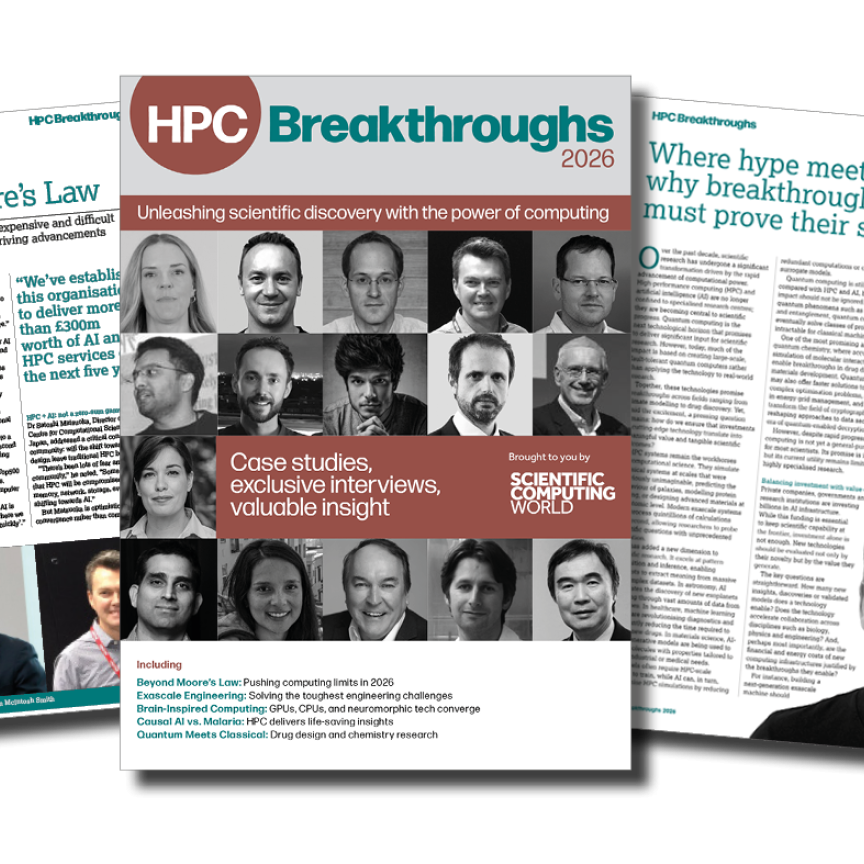Thirteen new projects pursuing ‘high-risk, high-payoff’ simulation research in energy-mission areas and national emergency mitigation at the Argonne Leadership Computing Facility (ALCF) have been awarded 809 million supercomputing core-hours by the US Department of Energy’s (DOE) Advanced Scientific Computing Research (ASCR) programme.
The recently announced 2013 ASCR Leadership Computing Challenge (ALCC) awards also allocated computing time at the Oak Ridge Leadership Computing Facility (OLCF) and NERSC at Lawrence Berkeley National Laboratory for a total of 32 projects and 1.6 billion core-hours. Additional projects may be announced at a later date as ALCC proposals can be submitted throughout the year.
Chosen through a peer review process, the selected projects reflect areas of special interest to DOE including advancing clean energy; advancing predictive understanding of climate and environmental systems; responding to natural and man-made disasters; and broadening the community of researchers capable of using leadership computing resources.
The 13 projects to receive rewards are as follows:
Robert DiStasio, Princeton University, was awarded 250 million core-hours to enable a highly accurate understanding of the microscopic structure of liquid water and yield insights on several important issues pertinent to the understanding and rational design of aqueous ion batteries.
Frederico Fiuza, Lawrence Livermore National Laboratory, received 19.5 million core-hours to perform the first full-scale 3D simulations of fast ignition, with the goal of identifying a path to demonstrate fast ignition as a viable scheme for inertial fusion energy.
Jeffrey Greeley, Purdue University, was awarded 50 million core-hours (and 25 million core-hours at OLCF) to improve theoretical understanding of water-metal interactions and provide improved technology for the prediction and development of technological applications related to such interactions, including electrocatalytic reactions and fuel cell science.
Katrin Heitmann, Argonne National Laboratory, was awarded 47 million core-hours to carry out N-body simulations aimed at enhancing interpretation of data from the Baryon Oscillation Spectroscopic Survey (BOSS) and furthering theoretical understanding of cosmic acceleration.
Elia Merzari, Argonne National Laboratory, received 80 million core-hours to support DOE’s Center for Exascale Simulation for Advanced Reactors (CESAR) with large petascale-level simulations that will address the limitations of current nuclear reactor core simulation tools and potential scaling issues for larger machines.
Richard Mills, Oak Ridge National Laboratory, was awarded 30 million core-hours to advance the reliability of climate change projections by improving the representation of Arctic eco-climatological processes at the scale of a high-resolution Earth System Model.
Parviz Moin, Stanford University, was awarded 150 million core-hours to address key challenges with large eddy simulations (wall modelling and primary atomisation) aimed at improving the realism of simulations for high-speed flows and further enabling next-generation engineering of energy-efficient and environmentally sound technologies, including airplanes, jet engines, fuel injectors, and turbines.
Hassan Nagib, Illinois Institute of Technology/KTH Mechanics, received 11 million core-hours to assess the 3D effects present in turbulent duct flows, with the goal of providing a deeper understanding of wall-bounded turbulence and collecting data for the development of more accurate turbulence models.
Jeffrey Neaton, Lawrence Berkeley National Laboratory, was awarded 23 million core-hours (and 18 million core-hours at OLCF) to pursue new predictive capabilities for structural, optical, and related excited state properties of a broad array of photoactive organic molecules and solids, transition-metal oxides, and their interfaces with an eye toward next-generation solar energy conversion.
Aleksandr Obabko, Argonne National Laboratory, was awarded 44 million core-hours to validate and cross-verify three thermal hydraulics large eddy simulation codes, with the goal of advancing nuclear energy research through improved computational simulation capabilities.
David Trebotich, Lawrence Berkeley National Laboratory, received 80 million core-hours (and 20 million core-hours at OLCF) to improve simulation capabilities for subsurface flow and reactive transport processes, providing an improved tool to validate and aid experimental interpretations for future developments in geologic carbon sequestration.
Frank Tung, UCLA, was awarded 40 million core-hours to conduct kinetic simulations of laser plasma interactions, advancing our understanding of phenomena essential to the success of inertial fusion energy.
Brian Wirth, Oak Ridge National Laboratory, was awarded 7.5 million core-hours (and 5 million core-hours at OLCF) to advance the understanding of the interaction between low-energy helium plasma and tungsten, the proposed material of the divertor for the International Thermonuclear Experimental Reactor (ITER). The outcome will improve the predictive modelling capability for materials design of the ITER divertor.

